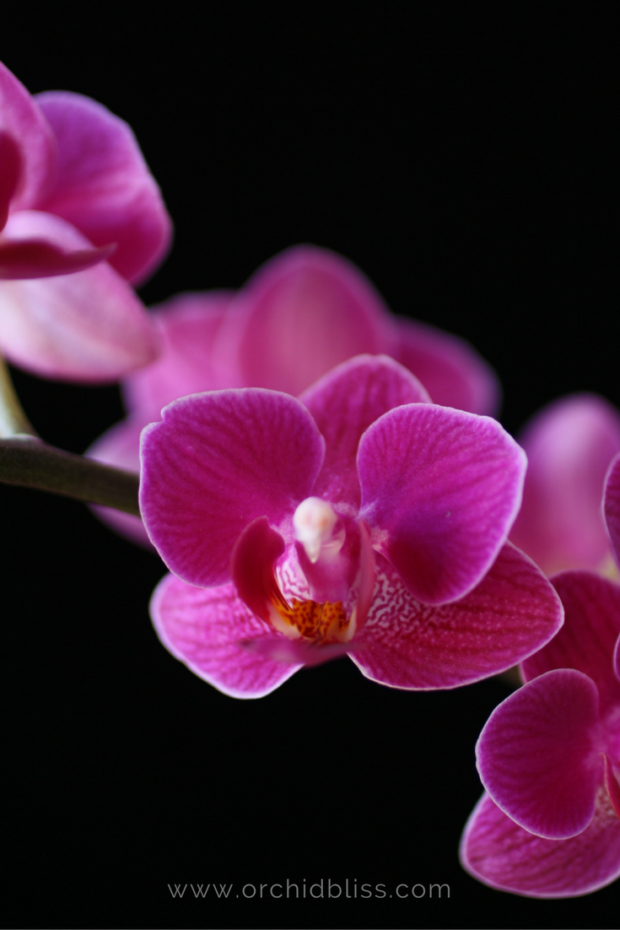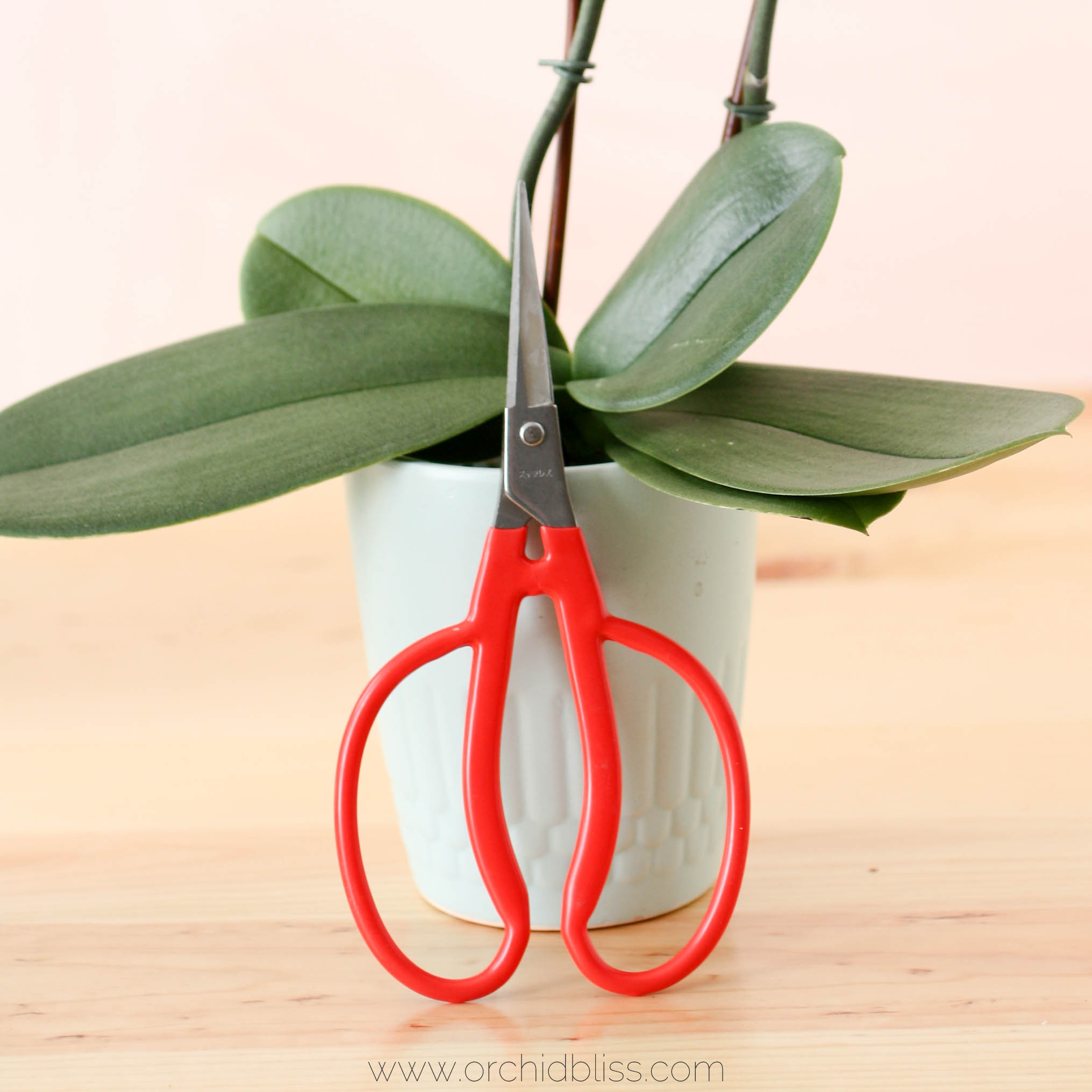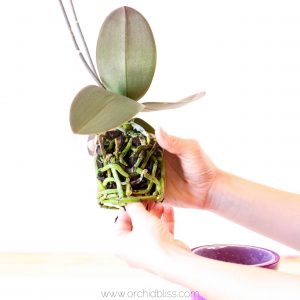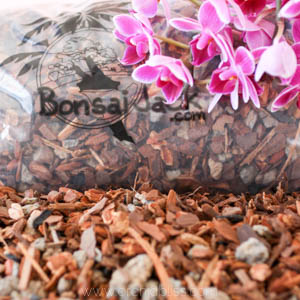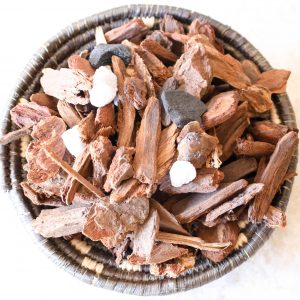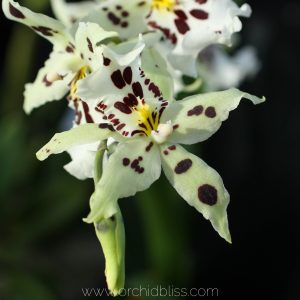
Let’s talk all about orchids. To begin, find out what distinguishes orchids from other plants. Next, we’ll dig deeper into orchid facts. For starters, orchids make up the largest flowering plant family in the world with over 25,000 species and 100,000+ hybrids. .
Orchids have 7 identifiers that make orchids – well, orchids:
- Flowers are mirrored halves
- A “lip” petal is a pollinator landing
- Male and female organs are fused
- A flap of tissue blocks self-pollination
- A seed capsule holds millions of seeds
- In nature, seeds need special fungi to germinate
- Velamen covered roots
Remember that other plants may have some of these same attributes and that not all orchids have all 7 of these characteristics. Even so, let’s take a closer look at the attributes are that scientists look for when identifying orchids.
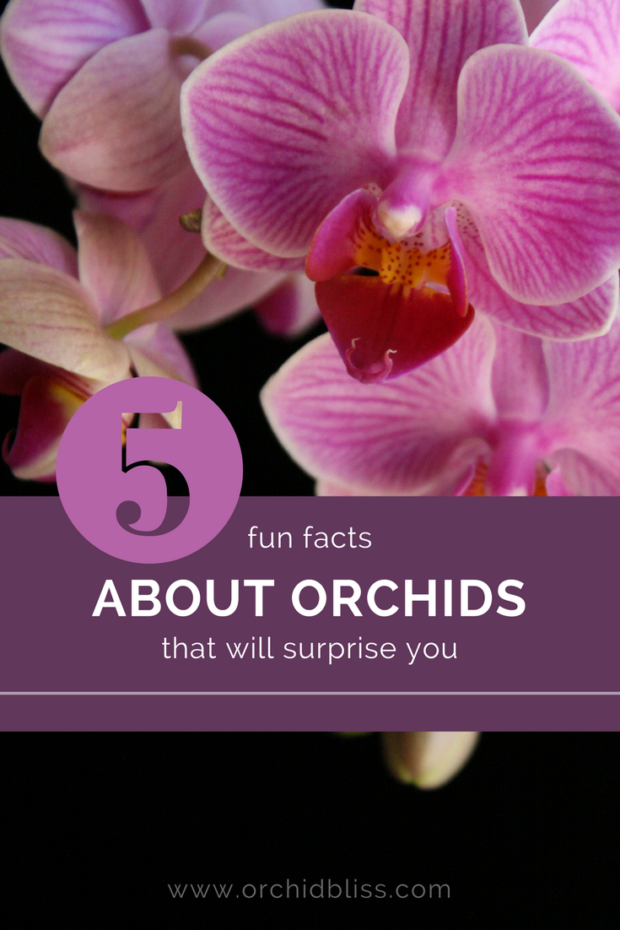
Some of the links on this page may be affiliate links. Click here to learn more.
- Orchid flowers are zygomorphic, also called bilateral symmetry. This means that if you cut the orchid flower in half, top to bottom, one side would look like the other- just like a face. Most other flowers are radially symmetric – and look similar all the way around.
- Orchids have a lower lip, also called labellum. The labellum is the lower, center petal and provides a landing platform for pollinators. Often the lip is unusually large and colorful in contrast to the rest of the flower.
- The column is a fusion of stamen/anther, where the pollen is made, and stigma, where the pollen germinates. On other flowers, these are separate parts, rather than a single organ.
- The rostellum is a flap of tissue within the column that separates the stamen and stigma and prevents self-pollination.
- Pollinia is a waxy capsule of orchid seeds. The pollinia are what pollinators carry away with them to pollinate other orchids.
- Because the seeds are so small they do not contain endosperm, the substance needed to provide energy to germinate on their own. Instead, orchids, in nature, rely on mycorrhizal fungi to provide the nutrients needed for germination. What orchids lack in nutrition, they make up for in numbers. Ironically, the plant family with the smallest known seeds produces the largest variety of flowering plants.
- Epiphytic orchid roots are covered in velamen – a layer of absorbent tissue.
As you can see, beauty is not an orchid’s only asset. We’ve only scratched the surface of what makes orchids so interesting.
Here are 20 more amazing facts about orchids.
1- Orchids are Hypoallergenic.
Do you have allergies? Well, you have found your flower in orchids because they are great for people with allergies! Orchid pollen is not airborne, rather, it is stored in a waxy substance, pollen packets called pollinia. This packet will stick to the pollinator that will then deliver the packet to another orchid. What this means to you and me is that orchids are easy to live with. Orchids will not make you sneeze.
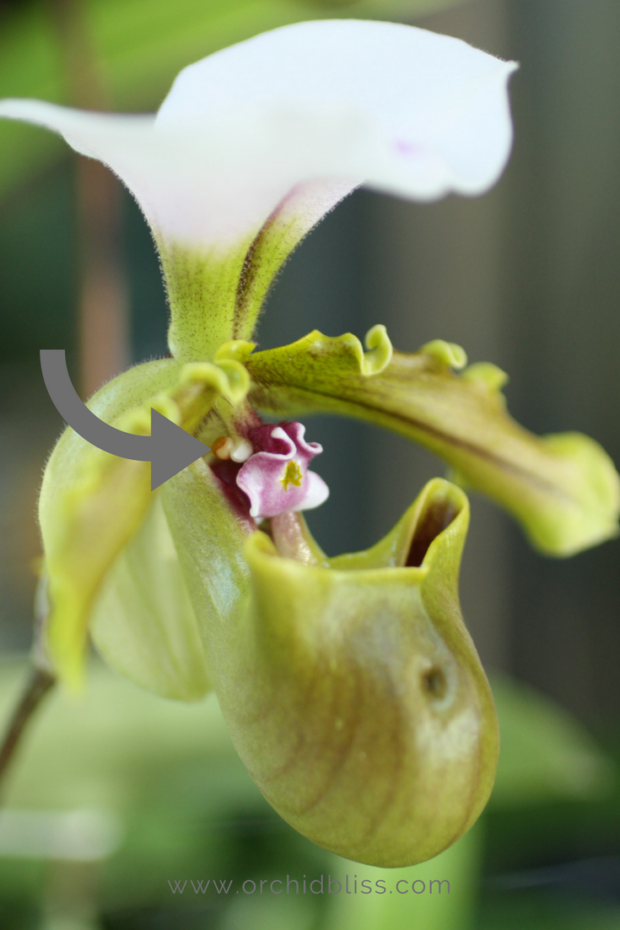
2- Orchid Seeds Need Fungi to Germinate
For many years when orchid enthusiasts first tried to grow orchids from seed, they failed. Over and over again they failed. Because orchids could not be grown from seeds, they became a rare and expensive commodity.
Eventually, it was discovered that the reason orchids are so difficult to grow from seed is that the minuscule seeds need a special fungus called mycorrhiza. Without this special fungus, epiphytic orchids simply will not germinate. The discovery of this fungus changed orchid propagation forever and helped to make them more than a prized plant, grown only by the rich. Now, while still not exactly inexpensive, orchids are now widely available.
3- Orchid Roots are Unusual
If you’ve ever potted an orchid you already know that orchid roots are unusual and different from other plants. Even more finely rooted orchids are thick compared to the fine web of roots grown by other plants.
Orchid roots have a special covering called velamen. This sheath acts as a sponge absorbing water and nutrients for the orchid. For most orchids, the roots are green when newly hydrated, silver-green, or white when healthy, but dry.
Mushy, limp orchid roots indicate overwatering.
Likewise, the roots should not be tan or brittle – this signals underwatering.
Healthy orchids have bright green root tips. If the root tips are black, that is an indication of high salts. Take care to re-pot an orchid with black root tips as salts can quickly kill roots and the orchid. CLICK HERE, to learn more about how just by looking at an orchid’s roots you can tell if it needs water.
4- Orchids Are Found On Every Continent – Except Antarctica
While we usually traditionally think of orchids as tropical plants, they are diverse. In fact, orchids grow on every continent, except Antarctica. Orchids grow everywhere from alpine meadows to sandy deserts.
Minnesota’s state flower is the pink and white lady’s slipper, the Cypripedium reginae. Another variety, commonly called the bog orchid grows in most US states and Canada.
To be fair, most cultivated orchids come from tropical, subtropical, and even cloud forest habitats. For many people, it is the cloud forest orchids that are the trickiest to grow. Typically, these orchids require high levels of humidity, cooler temperatures, and high light. Most cloud forest orchids are labeled cool-growers.
Orchids grow most commonly in the tropical and sub-tropical climates of South and Central America, and Asia, down through to New Zealand and, Australia. Even so, in the United States, there are over 200 varieties of native orchid species.
5- Not All Orchids Are Epiphytes
Epiphytic simply means that the orchid grows on a host tree. Epiphytic orchids’ roots are aerial and do not grow in soil. Instead, their roots wrap and secure themselves to their host. Epiphytic orchids are not parasitic and do not harm their hosts. While the majority of orchids are epiphytes, others are semi-terrestrial, terrestrial, or lithophytes.
Semi-terrestrial or terrestrial orchids live in the ground, in bogs, desert sand, or forest floors. Some of these orchids spread their roots along the surface of the earth. Their roots push along the forest floor in leaves and in loose, well-aerated earth. Other terrestrial orchids produce tubers that penetrate deeply into the soil and store energy reserves. Some of these orchids are deciduous – losing their leaves over the winter and growing new leaves in the spring.
Similar to epiphytic orchids, lithophytic orchids attach themselves to rocks rather than trees. And, like the epiphytic orchids, lithophytic orchids usually come from subtropical or tropical climates. One common trait of lithophytic orchids is their thick succulent leaves which are used to store water as a precaution against drought.
6- Orchids are the Largest Flowering Plant Family
With over 30,000 orchid species and many thousands of registered crosses, orchids can vary greatly. In fact, only grasses are a larger plant family, but orchids are the largest flowering plant family.
Now you know that there are far more orchid species than what we see at the grocery store! Those usually found at the grocery store are called Phalaenopsis. I love phals because their flowers can last for months. Just because phals are commonly available, doesn’t mean that they aren’t incredibly rewarding. If properly cared for, phalaenopsis orchids will re-bloom indefinitely. Miniature Phalaenopsis are becoming more and more available and are tough, compact orchids that produce many flowers.
Yet, the phalaenopsis isn’t the only orchid you can grow. Many dendrobiums, cattleyas, and paphiopedilums, among others, can be cultivated at home.
7- Some Orchids Smell Like Chocolate, Others Like Rotting Flesh
Did you know there is such a thing as a scented chocolate orchid? Check out Oncidium ‘Sharry Baby’. Being in a room with one of these orchids is like unwrapping your favorite chocolate bar. The scent is heavenly delicious–and they’re calorie-free! Just don’t eat it.
The most common Oncidium, ‘dancing lady’ has a lovely floral fragrance. ‘Twinkle’ another Oncidium has a nice vanilla fragrance. CLICK HERE, for a printable care guide to Oncidium orchids. Brassavola nodosa is noted for its sweet and heady nighttime aroma. CLICK HERE, for a printable care guide to Brassavola orchids. While many orchids have no fragrance at all, the orchid Bulbophyllum graveolens attract its pollinator, a fly, with the scent of rotting meat.
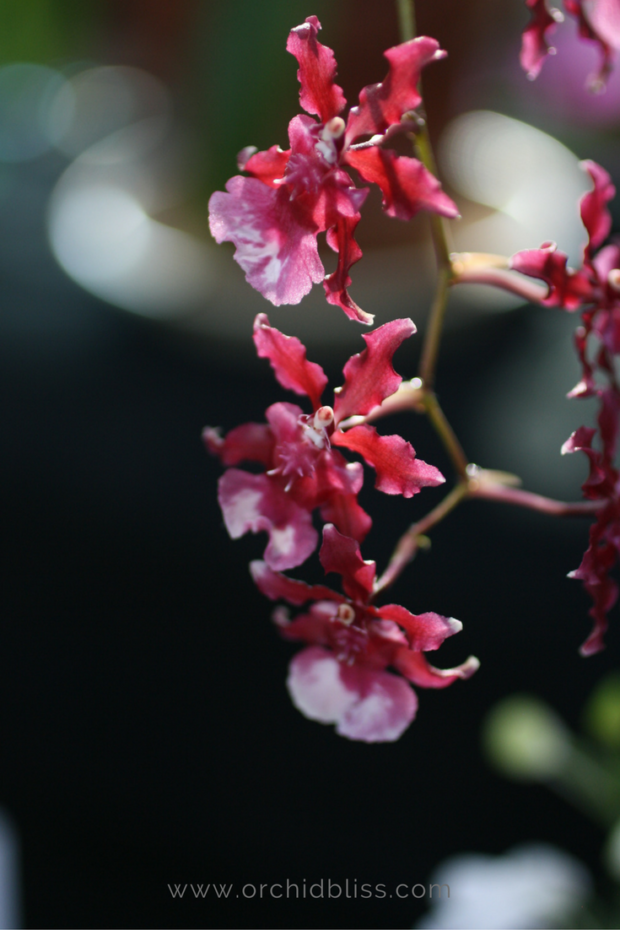
To learn more about easy-to-grow Oncidium orchids, click here.
8- Orchids Have Grit
Despite their finicky reputation, you can grow orchids. Orchids want to grow and can be hardy, resilient plants.
You just need three things to successfully grow orchids.
- Desire. You have to want to grow them. With the desire comes the willingness to learn what they need to thrive and the drive to provide them with their growing requirements.
- Determination. Orchids have grit. Some even say it is impossible to kill a cattleya orchid because they are so hardy. Of course, this is an exaggeration and you want your orchid to thrive not just barely survive. Harness some of your orchids’ tenacity to survive and determine to dedicate time and effort to your orchids’ needs and you will be richly rewarded with an exotic and remarkable plant.
- Dedication. Orchids are an investment. Not every variety of orchid should be grown by every orchid lover. Take time to research your growing environment and collect orchids that correspond with your growing conditions. The three main considerations the orchids need to grow well are particular light, temperature, and humidity. CLICK HERE, for easy ways to improve your orchid’s growing environment.
9- Orchids Have Fascinating Flower Shapes
Orchids have evolved to be enticing to their pollinators. One notorious example is Ophrys sphegodes, the bumblebee impersonator. When a male bee sees this orchid – posing as a female bee – he lands on the orchid’s colorful lip and inadvertently pollinates the orchid.
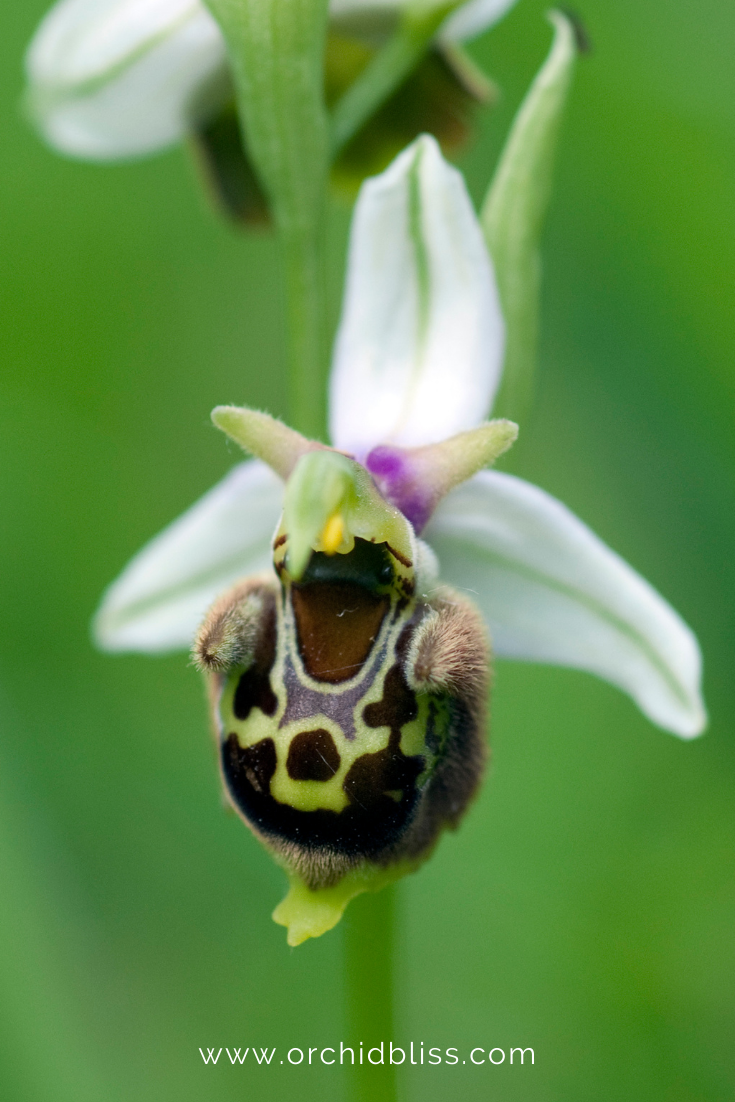
Another example is the more commonly cultivated Brassia orchid whose flowers look like a line of spiders – which attract a pollinating wasp.
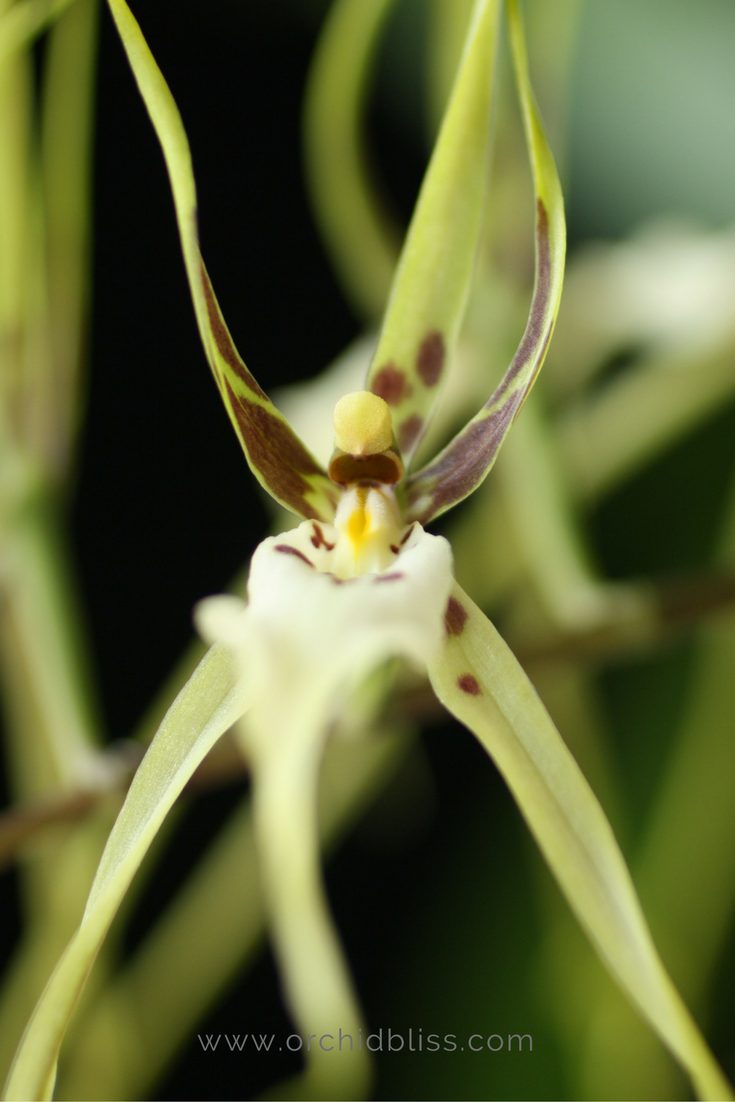
Other orchids have flowers with interesting shapes that we may interpret as dancers, monkeys, and little men.
10- Charles Darwin Studied Orchids
Perhaps the most famous admirer of orchids was the naturalist Charles Darwin. He first began studying orchids native to England and was fascinated to discover more orchid genera in tropical and subtropical climates. Darwin was particularly interested in the unusual ways orchids had evolved to attract pollinators to perpetuate their species.
Charles Darwin’s Fertilization of Orchids (1862) may have been the primary influence that started the Victorian orchid mania. So, while Darwin may be most known for his study of primates, it’s his publication on orchids that these spectacular plants to the public consciousness.
11- Orchids for the Rich
The Victorian Era was known as a time of so-called Orchid Delirium when some wealthy people became infatuated with collecting orchids. Orchid hunters brought orchids back to England where they were painstakingly cared for in hothouses. Since propagation was impossible it was difficult to replace lost orchids. Many orchids did not survive the trip to England.
12- Orchids Are for Everyone
Fortunately, after decades of frustration and failure, a few discoveries have made the joy of orchids more attainable for all. First, we learned that orchids require a special fungus, mycorrhiza, to provide nutrients so that orchid seeds can germinate and grow.
Second, Lewis Knudson learned how to bypass the fungus with sterile agar, a gelatinous substance that provided the environment and the nutrients to successfully grow and germinate orchids.
Third, Georges Morel used the agar method to clone a Cymbidium. The ability to clone orchids using agar paved the way for the modern commercialization of orchids we know today.
13- Orchids are Big Business
With the technology to clone orchids in agar, methods for propagation slowly improved. Eventually, the commercialization of orchids became possible and is now a huge industry. Countries like the US, Taiwan, Thailand, and the Netherlands are cashing in on exporting orchids. It is no surprise that orchids are the most popularly cultivated and exported ornamental plants.
14 – Many Orchids Easily Hybridize
Orchids seem to be made to hybridize. Crosses between orchid genera happen both in nature and in the lab. While not all orchids will cross with one another, many will interbreed. Thus, the term intergeneric orchids. With orchids, the hybrid possibilities are both endless and endlessly exciting. Hybridization has created orchids with desirable characteristics such as ease of reliability of blooming, hardiness, and smaller more compact plants. Cattleyas are like the poodles of the orchid world and are popularly hybridized. CLICK HERE, for a printable guide on how to care for cattleya orchids.
15- Orchid Fact – Hybrid Possibilities Are Endless
Just like human siblings can look vastly different from each other, so can orchid “siblings.” If you want a specific cultivar, an exact genetic copy, of a specific orchid, look for an orchid that denotes the hybrid cross in single quotes.
Here’s an example: Dendrobium Enobi Purple ‘Splash’
Dendrobium (that’s the genus) Enobi (that’s the species or hybrid grex) ‘Splash’ (that’s the name of the clone or cultivar).
Note: the word grex refers to a specific hybrid cross and is denoted by an x.
16- Orchids – It’s All About the Flowers – Except for Jewel Orchids
A lot of information about orchids is about how to get them to re-bloom If you want to take a break from focusing on flowering, jewel orchids are grown for their delicate leaf patterns. Additionally, jewel orchids do well in terrariums. Most orchids need constant, gentle air movement and don’t do well in the closed-in space of a terrarium. So, while jewel orchids do flower, it’s their leaves that attract attention.
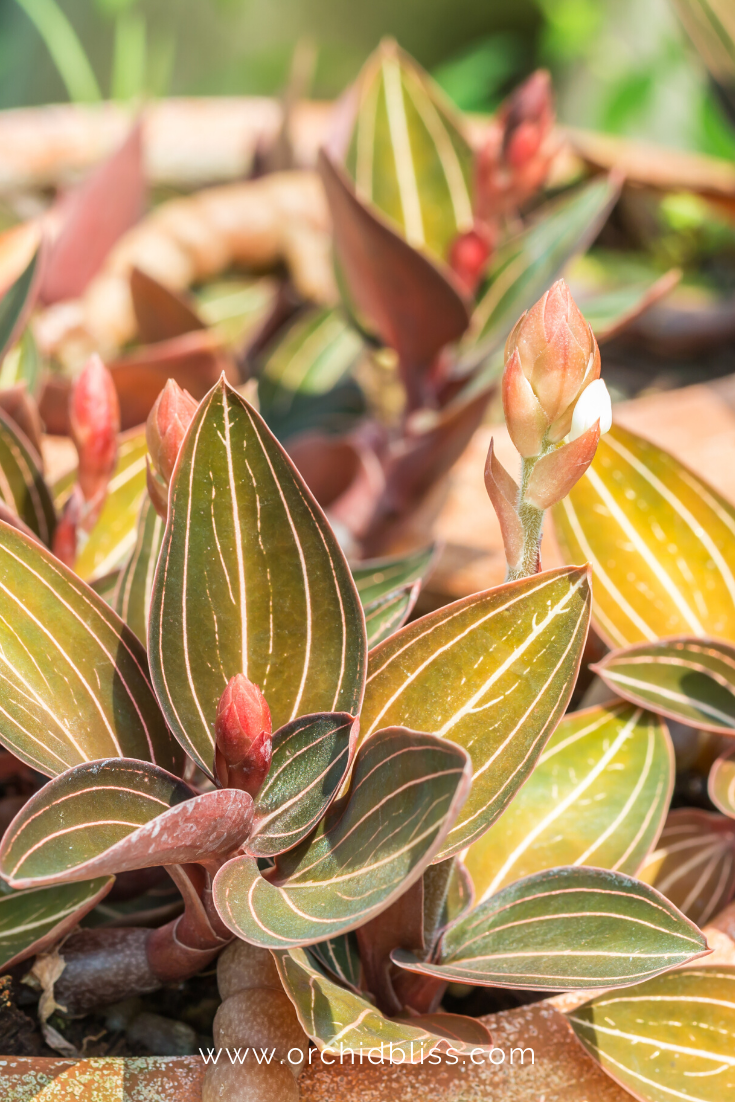
17- Some Orchids Grow Vertically, Others Grow Horizontally
Orchids grow one of two ways, either up along a single stem as with Phalaneopsis and Vanda orchids, or horizontally along a creeping rhizome, this includes the majority of orchids. Single stem orchids are known as monopodial (mono = single / pod = foot). Orchids with rhizomes are called sympodial (sym = many / pod = feet). CLICK HERE, to find out more about the growth patterns of monopodial and sympodial orchids.
18- Vanilla Is the Fruit of the Vanilla Orchid
Did you know that vanilla comes from an orchid and that the vanilla orchid is a long, thick-leafed vine? The fragrant vanilla orchid flower may last only a few hours. But, as the flowers open in stages, the plant may be in flower for many weeks, up to several months. As the flowers are open for only a short time, cultivators must work quickly to make sure that each flower is pollinated before the bloom fades. For commercial growers, it’s people, not bees, that do the pollinating. The vanilla pod is long and slender and is one of the most widely used flavors in the world. Vanilla pods have different flavors depending on their origin. CLICK HERE, to learn more about the vanilla orchid, plus get my recipe on how to make homemade vanilla.
19- Orchids Go Waaaay Back
It was discovered that orchids go back anywhere from 26 to 110 million years ago when a bee was found trapped in Miocene amber. And what pollen was that bee carrying? You guessed it – orchid pollen.
20- Buy Winning Orchids
With so many orchids available it can be overwhelming to choose one. As noted above, the first thing to do when deciding on an orchid to buy is to match your growing environment with an orchid’s ideal growing conditions in terms of temperature, light, and humidity.
Beyond matching grow environments with care requirements, you can look for award-winning orchids. These awards are so significant that they become part of the orchid’s name. Here are the awards, given by the American Orchids Society (AOS) and the Royal Orchid Society (ROS) listed in order of importance:
- First Class Certificate (FCC)
- Award of Merit (AM)
- Highly Commended Certificate (HCC)
You can easily tell if a prospective orchid is a winning cultivar because the tag would say something like FCC/ROS or AM/AOS.
Orchid Facts – Now You Know Your Orchid A Little Better
I love the feeling of infinite possibility that orchids share! Orchids have grace, and they’re tough, like us!
These beauties refused to be pigeonholed as tropical plants. There are thousands and thousands of orchid species and hybrids. They can smell like chocolate or rotting flesh. And, they won’t ever make you sneeze. Their biodiversity and pollination tactics are nothing short of astounding. And that’s a fact!

